Castles and Defense in the Middle Ages
We finally had beautiful weather, perfect for today's study of castles.
Our first stop was an oval defensive structure, probably built between the 11th and 13th c. from the local ferruginous sandstone.
Archeologists still aren't quite sure of its original purpose (currently being studied). It was possibly an "offensive" structure, erected at the edge of one county to put the lords of the next county on notice.

Nearby is the famous experimental archeology project of Guedelon, where a 13th-c. style château-fort (fortified castle) has been under construction for some 15 years. You can read more about it at www.guedelon.com (click "Anglais" [English] on the top left), complete with videos and history.

Thanks to our expert guide, Sarah, the students learned on-site how a castle was built in the Middle Ages. Most of the materials are quarried, chopped down, or grown right here, and much has been learned about sustainable building from this audacious experiment.


How a door was built and how to "lock" it.
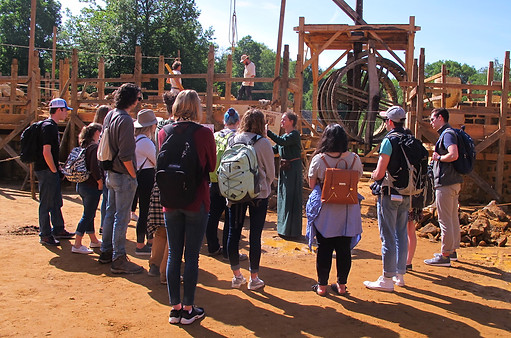
The double squirrel cage, powered by two people walking, allows 500 kg to be lifted up to the work site.
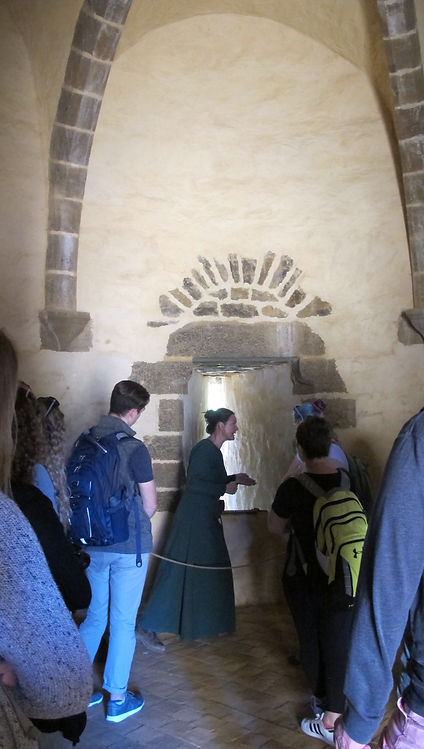
Sarah explained how archers used the arrow slits; overhead is a ribbed vault (last night we watched the DVD on how it was built).
How were castles built?
First comes the pige, a sort of ruler the length of the foot that the master mason will be using (measurements were not standardized in the Middle Ages; the metric system was introduced after the French Revolution). The pige is broken down into smaller measurements according to the length of a thumb, width of the hand, stretch of the fingers, etc.

Sarah then pulled a "laptop" out of her belt and showed the students how to create a castle.
It's a simple cord of 13 knots (made from locally-grown hemp) and with it, you can design buildings through basic geometric forms.

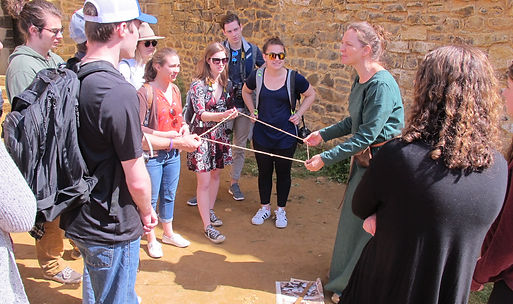
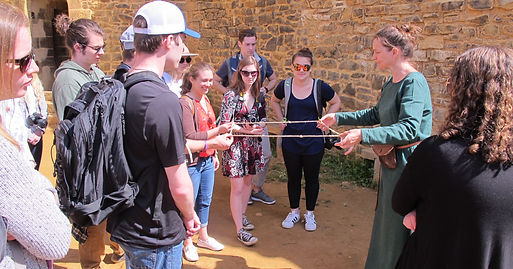
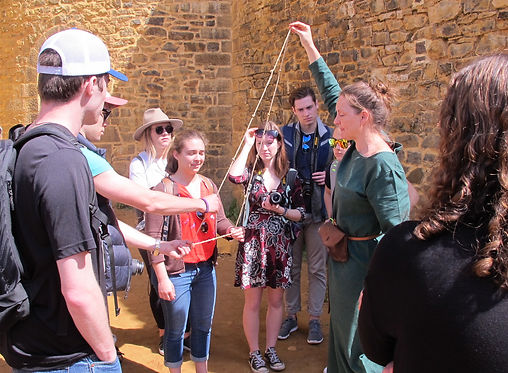
Students were then free to wander through the forest, or watch the stone masons or carpenters. Here the blacksmith explained that the ore was mined locally and how it was turned into usable iron.

He spends a lot of time every day sharpening tools, as sandstone is the local building material and it's very hard on the chisels.
Everything at Guedelon is as authentic as possible, although there didn't seem to be a lot of traffic to the earth closets.

After all the construction work, we headed to a lovely picnic spot near the actual 13th-c. castle of Druyes.

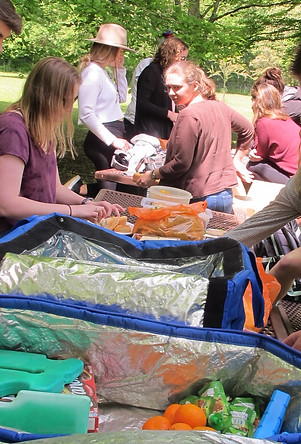
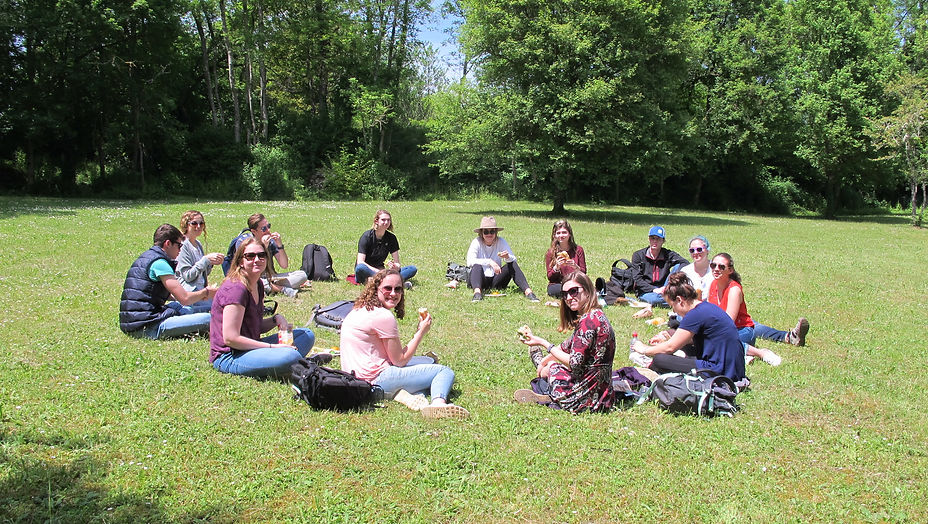

The next stop will be the castle on top of the hill.
But wait!!
At the bottom of the hill is a duck pond – and a family playground. Looks like recess time...





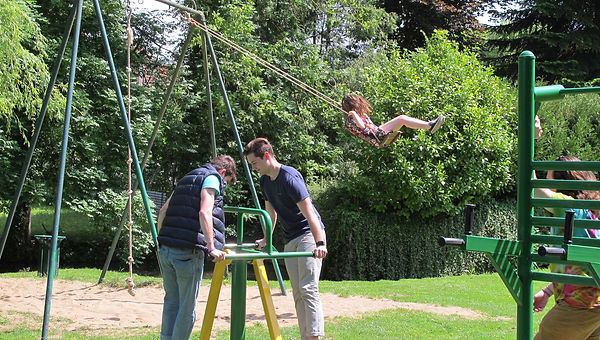


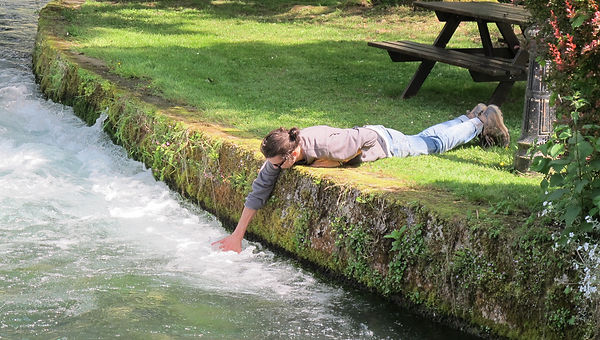
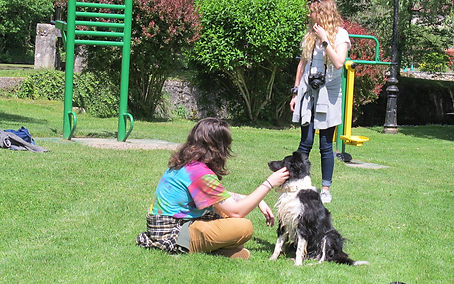

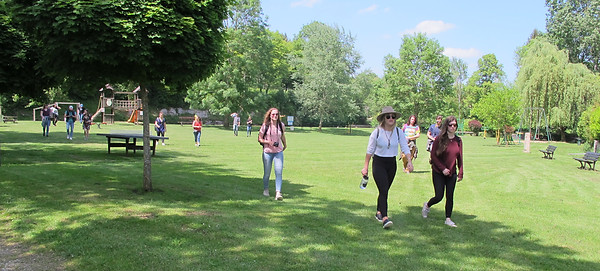
Recess over, time to move on.
But not before noticing the park's dedication:
to three WWII resisters from the village of Druyes (2012 pop.: 303) who were shot in the woods during skirmishes in the summer of 1944.
Every village in France lost young men in both world wars, and there is a memorial in every town listing their names.

We finally made it a bit closer to the castle of Druyes, high above the village.
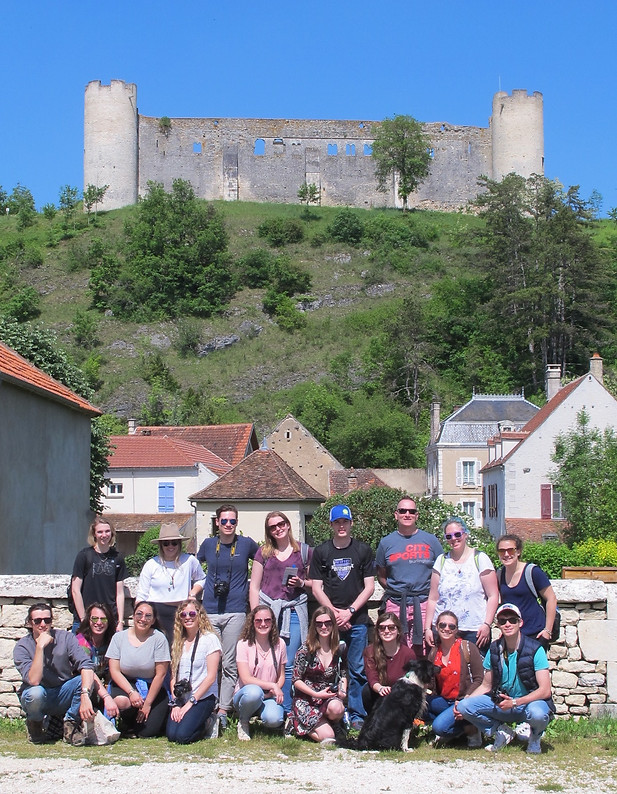
I'm a paragraph. Click here to add your own text and edit me. It's easy.
Druyes is a late 12th/early 13th-c. castle similar to the Guedelon design. The castle keep is the tallest structure, commanding magnificent views of the countryside.
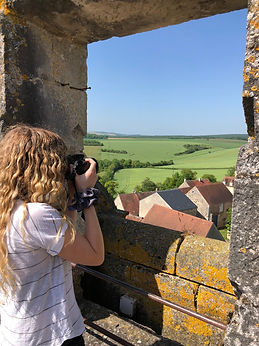
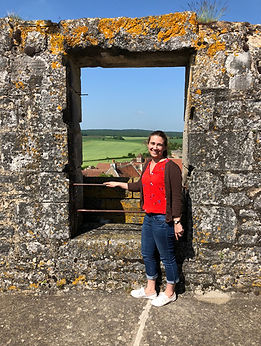
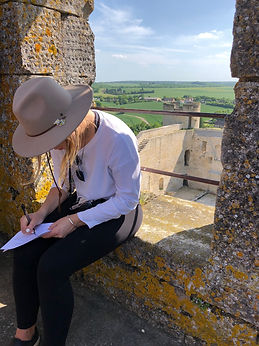
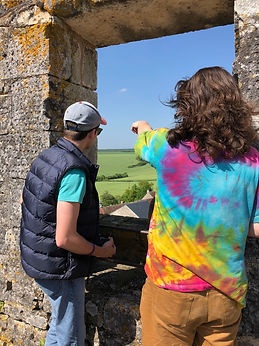





A quiz for the castle chapter-in-action. The students were divided into four groups and each group given a problem to solve:
1- You are military engineers; how would you design a castle for this site?
2- You are a hostile enemy and would like to take possession of this castle; what would be your strategy?
3- You are the count of Druyes and sense an imminent invasion; What measures will you take protect your castle?
4- It is 1650 and you are the king's carpenters and stone masons; how will you put this castle back in shape for potential action, given the evolution of arms and warfare since the 13th c.?
Each group had to argue their case, and take pointed – sometimes aggressive – questions from the audience.
A long and satisfying day. After supper, a review class for tomorrow's quiz.